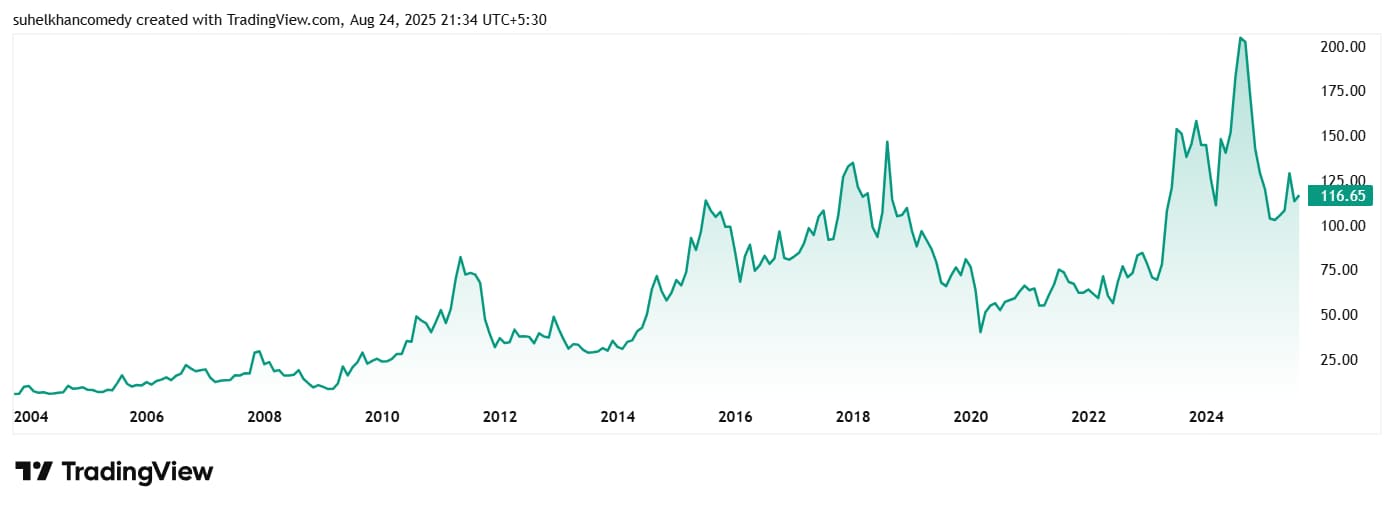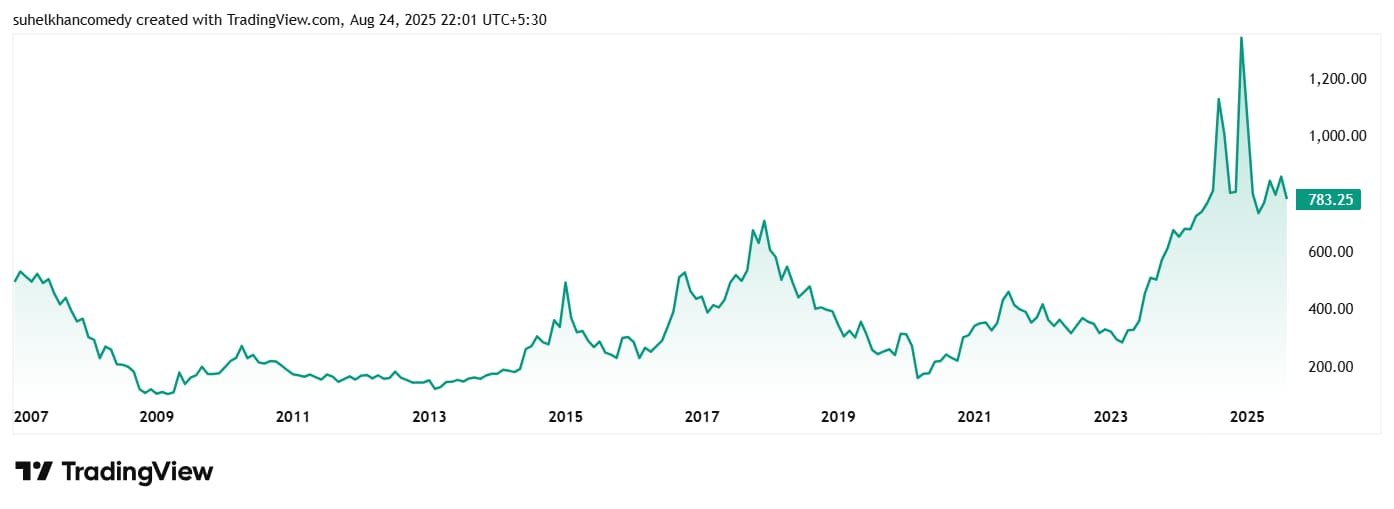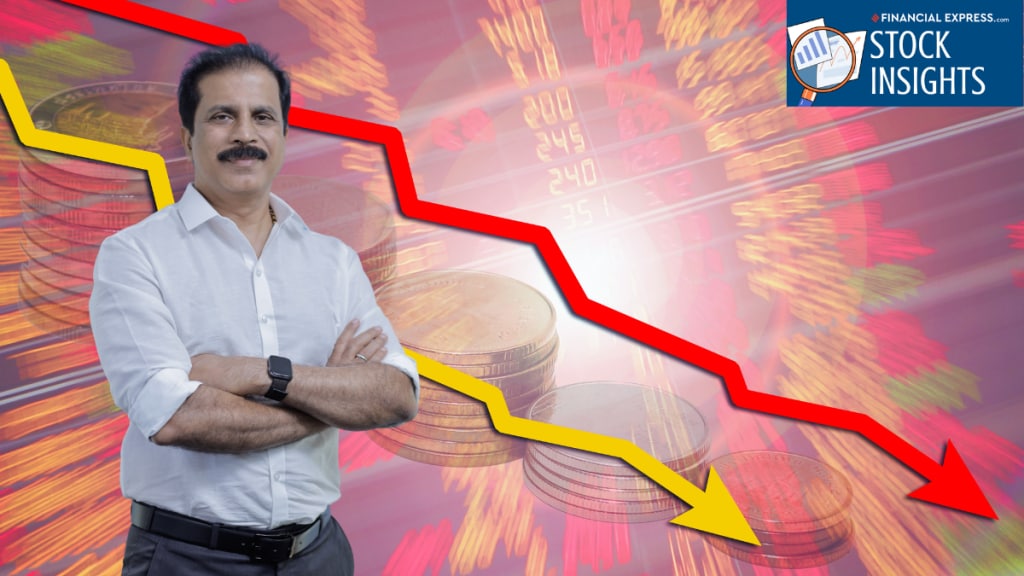Porinju Veliyath is one of the most respected and highly followed super investors of India. Founder of the portfolio management service Equity Intelligence India Pvt Ltd, Veliyath is an expert investor and fund manager. He is widely known for his value-first approach and also for more often than not – swimming against the tide. He has made a name for himself by picking multibagger stocks and building solid wealth with them.
So, when an investor of his calibre sticks to some stocks, despite big red flags, it is definitely worth taking note. And it gives air to a lot of questions, like if there is something in these companies that the average investor cannot see, but Veliyath knows. To the everyday investor, these companies could seem to be no go zones.
Currently there are two such stocks in his portfolio, which are trading over 45% discount, have see a big fall in some important numbers, but are still backed by Veliyath. Let us try to find out the reason behind this.
Writing India’s Future For 80 Years – Kokuyo Camlin Ltd
Incorporated in 1946, Kokuyo Camlin Ltd manufactures and trades consumer products viz. stationery and colour products.
With a market cap of Rs 1,168 cr, the company designs, develops and manufactures a wide range of stationery products, including scholastic supplies, writing instruments, notebooks, marker pens, inks, fine art and hobby colours, pencils, and accessories. It owns well-known brands like Camel and Camlin, offering a diversified portfolio of over 2,000 products.
India’s Warren Buffett, Porinju Veliyath, has held a stake in the company since the filing for the quarter ending June 2023. He currently holds 1.01% stake in the company worth Rs 12 cr through Equity Intelligence India Private Limited.
The company has seen a lot of red when it comes to financials, beginning with sales.
Sales have seen a compounded growth of just 4% in the last 5 years and has seen a big drop in FY25 from the previous year’s recorded number.
| Year | FY20 | FY21 | FY22 | FY23 | FY24 | FY25 |
| Sales/Cr | 634 | 403 | 508 | 775 | 816 | 763 |
The EBITDA (earnings before interest, taxes, depreciation, and amortization) saw growth between FY21 and FY24, but FY25 logged a break in the momentum.
| Year | FY20 | FY21 | FY22 | FY23 | FY24 | FY25 |
| EBITDA/Cr | 37 | 9 | 17 | 54 | 77 | 34 |
Coming to the the net profit, the compounded growth in the last 5 years is 8%. But dig a little deep and the profits have been swinging wildly.
| Year | FY20 | FY21 | FY22 | FY23 | FY24 | FY25 |
| Profits/Cr | 4 | -15 | -5 | 24 | 44 | 6 |
The share price of Kokuyo Camlin Ltd was around Rs 60 in August 2020, which has jumped to its current price of Rs 116 as of closing on 22nd August 2025, which is a jump of about 93% in 5 years.
Kokuyo Camlin Ltd Price Chart

At the current price of Rs 116, the stock is trading at a discount of almost 50% from its all-time high price of Rs 231.
The company’s shares are trading at a negative PE due to losses in the trailing twelve months, while the current industry median is 29x.
The current, ROCE (Return on Capital Employed) of the company is just 4%, while the industry median is 19%. Which means for every Rs 100 the company spends as capital, it makes a profit of Rs 4 on it while the industry is around Rs 19.
The company recently did an internal check at its Tarapur plant which revealed a Rs 22.7 crore inventory mismatch and launched a forensic audit by PwC, which confirmed that employees and job workers were involved in manipulating data and records between FY21 and FY24. In response, the company is taking disciplinary action against the individuals responsible and strengthening its internal controls with PwC’s recommendations and a new SAP consultant. The full financial impact of Rs 22.7 crore has been written off in Q2 FY25, and the management expects no further losses from this issue.
From the TVS Group – Sundaram Brake Linings Ltd
Incorporated in 1978, Sundaram Brake Linings Ltd manufactures asbestos free friction materials.
With a market cap of Rs 309 cr, the company is part of the T S Krishna Group, which in turn is part of the larger TVS Group. It is in the business of manufacturing automotive, non-automotive, railways and industrial friction materials. Its products are used in commercial vehicles, passenger cars, tractors (agricultural), railways and two wheelers.
Veliyath bought 1.02% in the company (through Equity Intelligence India Pvt Ltd) as per the filings for the quarter ending December 2024. And despite the falling profits that the company has seen, he in fact increased his stake to 1.06% for the quarter ending March 2025 and finally to 1.3% for the quarter ending June 2025.
The company sales have seen a compounded growth of 6% in the last 5 years.
| Year | FY20 | FY21 | FY22 | FY23 | FY24 | FY25 |
| Sales/Cr | 258 | 237 | 295 | 355 | 352 | 352 |
The EBITDA was more of a roller-coaster ride…
| Year | FY20 | FY21 | FY22 | FY23 | FY24 | FY25 |
| EBITDA/Cr | 6 | 8 | 3 | 3 | 19 | 15 |
The net profits for Sundaram Brake Lining are an area of concern, with the company showing signs of a turnaround in FY24 but then seeing a drop again in FY25.
| Year | FY20 | FY21 | FY22 | FY23 | FY24 | FY25 |
| Profits/Cr | 3 | 6 | 0 | -5 | 10 | 5 |
The share price of Sundaram Brake Linings Ltd jumped from around Rs 261 in August 2020 to its current price of Rs 784 as of closing on 22nd August. That is a jump of 200%.
Sundaram Brake Linings Ltd Price Chart

At the current price of Rs 784, the company’s share is trading at a discount of about 45% from its all-time high price of Rs 1,444.
The company’s share is trading at a PE of 98x which is much higher than the current industry median of 28x. The current ROCE of the company is 8%, while the industry median is 14%.
The company’s recent Annual report says, “Indian automotive industry growth in FY 2025–26 is expected to see increased production across passenger, commercial, and two-wheeler segments. The Company is well positioned to benefit from its strong partnerships with OEMs and its product portfolio expansions. The growing Indian vehicle parc (total number of vehicles that are registered and actively in use within a specific geographic area at a given time) supports the Company’s aims to grow its aftermarket business, and the increasing vehicle tonnage aligns with its focus on high-quality, long life brake linings that ensure safety and enhance both the brand and repeat purchase.”
The Hidden Veliyath Strategy – Fallen from Profits & Peaks?
The two stocks that we saw today have logged in some worrisome numbers when it comes to financials, the effects of which are clearly seen in the share prices. This has however not affected Porinju Veliyath, and he continues to hold these stocks. In fact, he even raised stakes in one of them amidst this fall.
While Sundaram Brake Lining foresees the company growing with the growth of the automobile sector, Kokuyo Camlin has found cracks in the internal systems which it is fixing with the help of PwC. But both companies have 2 things in common – Falling profits and backing by Veliyath.
Which is why it would be interesting to see how these two companies and their share prices do in the short and long run. Whether these will turn to milestones in Veliyath’s journey or some hard-learned lesson, only time will tell.
Disclaimer
Note: We have relied on data from www.Screener.in and www.trendlyne.com throughout this article. Only in cases where the data was not available, have we used an alternate, but widely used and accepted source of information.
The purpose of this article is only to share interesting charts, data points and thought-provoking opinions. It is NOT a recommendation. If you wish to consider an investment, you are strongly advised to consult your advisor. This article is strictly for educative purposes only.
Suhel Khan has been a passionate follower of the markets for over a decade. During this period, He was an integral part of a leading Equity Research organisation based in Mumbai as the Head of Sales & Marketing. Presently, he is spending most of his time dissecting the investments and strategies of the Super Investors of India.
Disclosure: The writer and his dependents do not hold the stocks discussed in this article.
The website managers, its employee(s), and contributors/writers/authors of articles have or may have an outstanding buy or sell position or holding in the securities, options on securities or other related investments of issuers and/or companies discussed therein. The content of the articles and the interpretation of data are solely the personal views of the contributors/ writers/authors. Investors must make their own investment decisions based on their specific objectives, resources and only after consulting such independent advisors as may be necessary.

